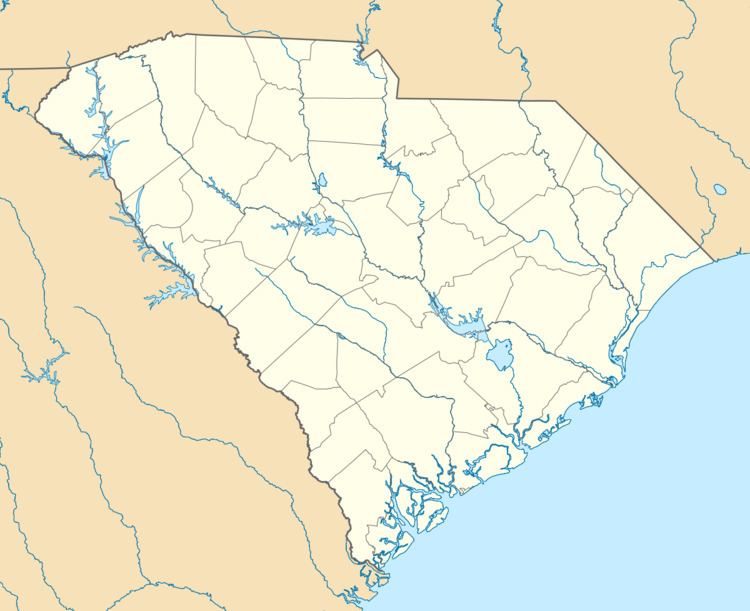 | ||
Source | ||
Black Mingo Creek is a tributary to the Black River in coastal South Carolina. It derives its name from mingo or minko, the Chickasaw word for chief. This area was a special hunting ground and a center of the eastern Chickasaw in colonial times.
Contents
Map of Black Mingo Creek, South Carolina, USA
It is a blackwater river: the presence of tannin gives it the color of tea. The river is relatively untouched by modern development, and is mostly surrounded by wetlands of cypress and tupelo with the adjacent higher lands mostly used for conventional agriculture or tree farming. The waters are a favorite fishing site for largemouth bass and panfish. Beavers are abundant, as well as great blue herons, songbirds and crows. Occasionally a bald eagle can be sighted. Alligators are also present.
The creek drains communities around Indiantown (named in reference to the Chickasaw tribal headquarters), Nesmith, and the communities of Rome and Rose Hill.
HistoryEdit
The lower region is a deep tidal river, navigable by colonial-era ships to the former community of Willtown (AKA:Rhems), about halfway up the length of the creek. This village once did a thriving business exporting agricultural products such as the indigo plant, which was grown in the area and exported to Britain for use as a dye. After the American Revolution, the British market was closed to American exports, and the resulting loss of commerce led to the dwindling of the Willtown (AKA:Rhems) community. After the Georgetown District was split into Georgetown and Williamsburgh counties in 1804, Willtown (AKA:Rhems) was isolated on the outer edge of two counties.
The decision by the state in 1811 to build the creek bridge for the main north-south road about a mile downstream of Willtown (AKA:Rhems) accelerated the village's decline. Today, very little evidence is visible that there was ever a village there.
The area is part of the proposed Francis Marion Trail as it has the site of the Battle of Black Mingo of the American Revolution, which routed the British from their attempt to fortify and hold the area.
Notable natives and residentsEdit
He helped the Cardinals win the World Series in 1926, 1931 and 1934, and the National League Pennants in 1928 and 1930.
He finished 8th in voting for the 1926 National League MVP for having a 20-7 Win-Loss record, 34 Games, 34 Games Started, 20 Complete Games, 1 Shutout, 258 Innings Pitched, 241 Hits Allowed, 121 Runs Allowed, 92 Earned Runs Allowed, 12 Home Runs Allowed, 75 Walks Allowed, 72 Strikeouts, 1 Hit Batsmen, 5 Wild Pitches, 1,068 Batters Faced, 1 Balk and a 3.21 ERA.
In 12 seasons he had a 105-97 Win-Loss record, 294 Games, 229 Games Started, 91 Complete Games, 8 Shutouts, 41 Games Finished, 10 Saves, 1,725 ⅓ Innings Pitched, 1,958 Hits Allowed, 989 Runs Allowed, 805 Earned Runs Allowed, 113 Home Runs Allowed, 529 Walks Allowed, 534 Strikeouts, 20 Hit Batsmen, 33 Wild Pitches, 7,516 Batters Faced, 4 Balks and a 4.20 ERA.
He died in Columbia, South Carolina at the age of 68.
